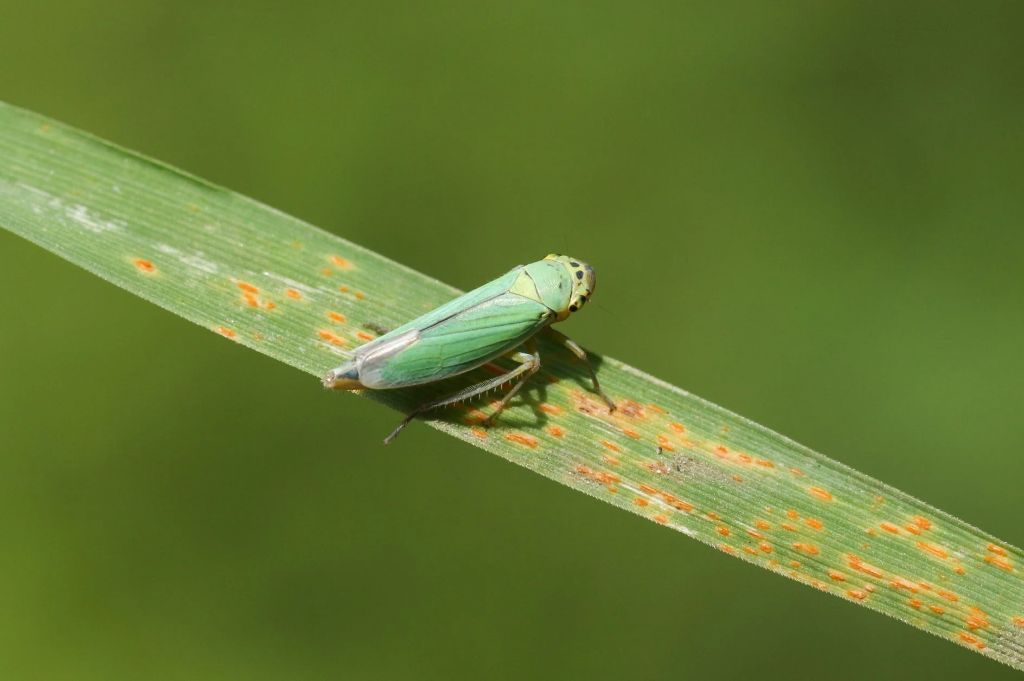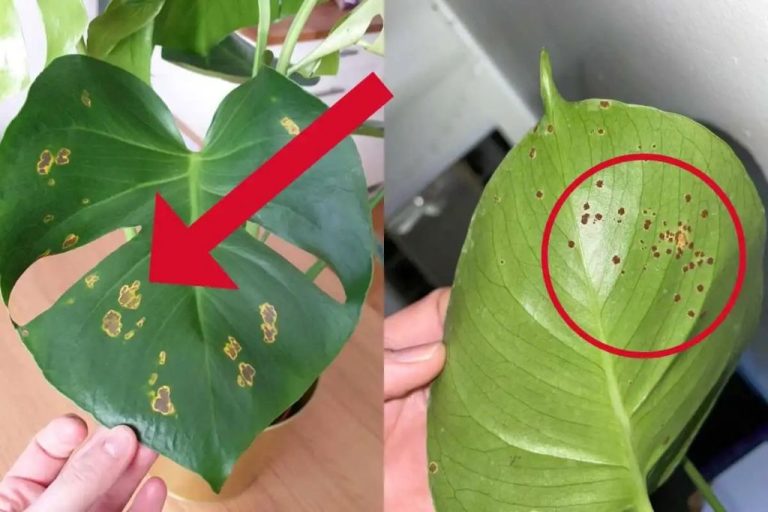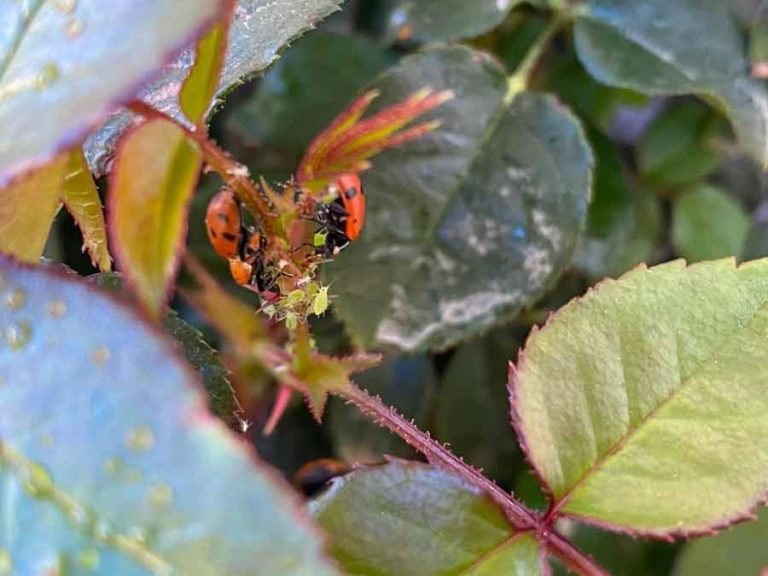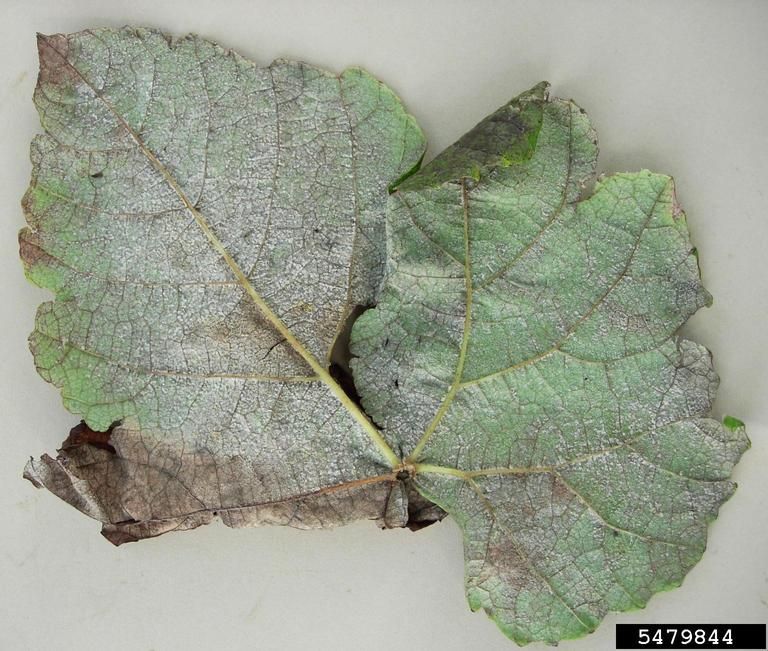Managing Leafhopper Infestations: Protecting Your Plants
What are Leafhoppers?
Leafhoppers are small, wedge-shaped insects that are typically green, brown, or yellow in color. They get their name from their ability to jump quickly when disturbed, much like a grasshopper. Leafhoppers have piercing-sucking mouthparts that allow them to feed on plant sap from the vascular tissues of leaves, stems, and other aboveground plant parts [1]. There are thousands of different leafhopper species, but some of the most common garden pests belong to the Cicadellidae family.
Leafhoppers can be very problematic for plants as they extract nutrients and fluids, weaken the plant, and spread disease. The direct damage from their feeding reduces the plant’s vigor and stunts growth. It also allows entry points for bacterial and fungal infections [2]. Leafhoppers are also efficient vectors of plant viruses and phytoplasmas, which are fatal to many plants. For these reasons, leafhopper infestations can quickly escalate into serious issues if not managed properly.
Where Leafhoppers Are Found
Leafhoppers are found worldwide, thriving in temperate, subtropical, and tropical environments. They are generally more abundant in warmer climates. Leafhoppers can be found in a diverse range of habitats including forests, grasslands, agricultural fields, gardens, and urban areas.
Certain species prefer specific host plants, so their distribution depends on the range of those plants. For example, the potato leafhopper (Empoasca fabae) is found wherever potatoes and related plants grow, while the rose leafhopper (Edwardsiana rosae) sticks close to its preferred rose host.
In the United States, leafhoppers are common across the country but populations tend to be higher in the Midwest, South, and West Coast according to research from the Illinois Natural History Survey. They thrive in areas with warm, humid climates and adequate rainfall that allows their host plants to flourish.
Certain species like the glassy-winged sharpshooter (Homalodisca vitripennis) have spread to new regions due to transportation of infested plant materials. This invasive leafhopper was likely introduced to California via ornamental plant shipments and has caused major agricultural damage.
How to Identify a Leafhopper Infestation
Leafhoppers are tiny insects that suck the sap from plant leaves and stems. While a minor infestation may go unnoticed, heavy leafhopper damage can stunt plant growth and reduce yields. There are several signs to look for when identifying a leafhopper problem:
Signs of leafhopper damage:
- Stippling on leaves – Tiny white or yellow spots caused by leafhopper feeding. These spots may merge into yellow patches as the damage worsens.
- Curled, distorted leaves – Leafhopper saliva is toxic to plants and causes leaves to pucker, curl, and twist.
- Stunted plant growth – Extensive leafhopper feeding inhibits photosynthesis, stunting the plant.
- Leaf scorching – Once leafhopper populations reach high densities, their feeding may cause leaf edges or tips to brown and die back.
- Honeydew secretions – Leafhoppers excrete a sticky, sugary substance called honeydew. Ants, wasps, and sooty mold may be attracted to it.
- Reduced yield – Leafhoppers divert plant energy away from fruit/vegetable production, resulting in smaller crops.
Checking the undersides of leaves for the insects themselves is the best way to confirm leafhoppers. Use a magnifying glass to look for small (1/4 inch), wedge-shaped bugs that may hop or fly away when disturbed. Referencing images of leafhopper damage online can also help identify characteristic signs.
Source: https://www.terminix.com/blog/home-garden/identify-leafhopper-damage/
Life Cycle of Leafhoppers
Leafhoppers go through three main life stages in their life cycle: egg, nymph, and adult.
The life cycle begins when adult female leafhoppers use their ovipositor to insert eggs just under the surface of leaves, stems, or plant tissues (UC IPM). The eggs are very small and shaped like grains of rice. They are often laid in a group of 10-40 eggs. The eggs hatch in about 7-14 days depending on the temperature.
After hatching, the leafhopper nymphs look similar to adults but are smaller and wingless. Nymphs go through 5 molting stages over 2-3 weeks before reaching full maturity. Nymphs often feed on the underside of leaves.
Once mature, adult leafhoppers have fully developed wings and can fly from plant to plant. Adults live for 2-3 months. Females begin laying eggs about a week after becoming adults. There are often multiple generations of leafhoppers per year (Study.com).
Common Leafhopper Species
There are thousands of different leafhopper species, but some of the most common ones that can become garden pests include:
The potato leafhopper (Empoasca fabae) is an important pest of vegetables, fruits, and ornamental plants. They have a bright green wedge-shaped body and can quickly damage crops by sucking the sap. Learn more at https://www.inaturalist.org/taxa/53237-Cicadellidae.
The rose leafhopper (Edwardsiana rosae) has a yellow and pink body with spots on its wings. It feeds on roses and other ornamentals, causing stippling damage on leaves. See images at https://bugguide.net/node/view/146.
The grape leafhopper (Erythroneura spp.) is very small with bright white markings. It damages grapevines by feeding on leaf tissue. Learn more about identification at https://en.wikipedia.org/wiki/Leafhopper.
Natural Predators of Leafhoppers
Leafhoppers have many natural enemies that help keep their populations in check. Some of the most common predators of leafhoppers include:
Ladybugs (also called ladybird beetles) are voracious predators that feed on aphids, mealybugs, spider mites, and leafhopper nymphs and adults. Both the larvae and adult stages will consume leafhoppers. Common ladybug species include the convergent lady beetle, seven-spotted lady beetle, and transverse ladybug.
Lacewings are effective leafhopper predators. The larvae (called aphid lions) are especially hungry predators with large, sharp mandibles that allow them to catch and feed on leafhopper nymphs with ease. Common green lacewings and brown lacewings help control leafhopper populations.
Spiders like the crab spider, orb weaver, and lynx spider all prey on leafhoppers and other small insects. Their webs trap adult leafhoppers while spiders like the jumping spider hunt and pounce on them. Certain species of Agrarian sac spiders and Funnel weaver spiders are common leafhopper predators (https://ipm.ucanr.edu/PMG/C302/m302splfhprenemy.html).
Conserving and attracting these natural predators can be an effective part of an integrated pest management program for managing leafhoppers.
Organic Leafhopper Control

There are several organic and natural methods that can help control leafhopper infestations without the use of harsh chemicals.
Insecticidal soaps containing potassium salts of fatty acids can be effective against leafhopper nymphs and adults. When applied directly to leafhoppers, the soap disrupts cell membranes and causes insect mortality. Products with potassium laurate as the active ingredient, such as Safer’s Insect Killing Soap, work well.
Neem oil, derived from the seeds of the neem tree, can deter leafhoppers from feeding and interrupt their lifecycle. Studies show that neem oil reduces leafhopper fecundity and fertility. Products like Bonide Neem Oil can be sprayed on plants or applied as a soil drench.
Floating row covers provide a physical barrier that keeps leafhoppers off plants while allowing air, light, and water through. Use a fine mesh size like 0.6-0.9mm. Drape the fabric directly over plants and secure the edges with stones, boards, or landscape pins.
With regular applications, these organic methods can minimize leafhopper damage and avoid the need for chemical pesticides.
Chemical Leafhopper Treatment
Chemical insecticides can provide quick and effective control of leafhopper infestations. Some common active ingredients used against leafhoppers include:
- Pyrethroids like permethrin, cypermethrin, and bifenthrin
- Neonicotinoids like imidacloprid, thiamethoxam, and acetamiprid
- Carbamates like carbaryl
- Organophosphates like malathion and acephate
These broad-spectrum insecticides are fast acting and lethal to leafhoppers when applied as foliar sprays or systemic treatments. However, they can also kill beneficial insects like lady beetles that prey on leafhoppers. Overuse of chemical insecticides can lead to resistance in leafhopper populations over time. Insect growth regulator products like azadirachtin, pyriproxyfen, and diflubenzuron are safer for beneficials but slower acting on leafhoppers.
When using chemical insecticides, it’s important to follow all label instructions for protective equipment, application rates, and pre-harvest intervals. Rotate chemical classes to reduce resistance. Only apply when economic thresholds are reached. Combine with cultural practices like removing weed hosts and using row covers as part of an integrated pest management plan.
Source: https://www.mgk.com/pest/leafhoppers/
Cultural Leafhopper Prevention
There are some effective cultural practices that can help prevent leafhopper infestations and damage:
Companion planting with plants that repel leafhoppers can help deter them from attacking your main crops. Some examples of companion plants include basil, catnip, garlic, and petunias. The strong scents from these plants can mask the scent of your edible plants and make them less appealing to leafhoppers (https://ipm.ucanr.edu/agriculture/grape/leafhoppers/).
Regularly removing plant debris and pruning overgrown areas eliminates places where leafhoppers like to lay their eggs. Keeping your garden tidy and free of dense vegetation removes their ideal breeding grounds (https://www.arbico-organics.com/category/pest-solver-guide-leafhoppers-planthoppers).
Rotating annual crops to different parts of your garden each year can also disrupt leafhopper life cycles. This prevents populations from becoming established on certain plants.
Using row covers or greenhouse structures can physically exclude leafhoppers and protect plants. Just be sure to monitor enclosed areas closely for any pests that may gain access.
Proper pruning and training of vines, bushes, and trees opens up their structures to improve air circulation and sunlight exposure. This creates a less hospitable environment for leafhoppers.
When to Call a Professional
If you are experiencing a severe leafhopper infestation that has not been controlled by cultural practices or organic treatments, it may be time to call in a professional pest control company. Signs that you need professional help include:
- Extremely high populations of leafhoppers covering leaves, stems, fruit, etc.
- Severe leaf stippling, curling, yellowing, browning or plant stunting
- Presence of sooty mold from leafhopper honeydew
- Rapid reinfestation after treatments
- Plant death or decline
Professional exterminators have access to more potent chemical treatments like pyrethroids and neonicotinoids that can knock down heavy leafhopper populations. They also have specialized spray equipment that can thoroughly coat the undersides of leaves and reach the high populations found on tall trees. Calling a pest control company is highly recommended if you are dealing with a widespread, out of control leafhopper infestation. For more information, see the Angi article When To Call An Exterminator For These Household Pests.






